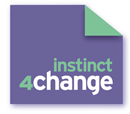 My recent article for Quiver Management Everybody’s talking – breaking the pattern of ineffective conversations explored how leaders can use David Kantor’s Structural Dynamics model to have more effective conversations. David, a renowned systems therapist, has focused his career on helping people manage their conversations. His research has led to development of this model as a way to understand and describe any human interaction.
My recent article for Quiver Management Everybody’s talking – breaking the pattern of ineffective conversations explored how leaders can use David Kantor’s Structural Dynamics model to have more effective conversations. David, a renowned systems therapist, has focused his career on helping people manage their conversations. His research has led to development of this model as a way to understand and describe any human interaction.
The Structural Dynamics model is based on empirical research and demonstrates that every speech act can be categorised as having one of four types of action (Move, Oppose, Follow, or Bystand); one of three types of content or language (Power, Meaning, or Affect); and one of three types of rules (Open, Closed, or Random).
Making sense of the language we speak – Structural Dynamics
In this article I explore the content or language dimension of the model (Power, Meaning, or Affect) described as the Communication Domain, and consider how leaders can use it to to adapt their leadership conversations to get powerful results.
If you really want me to understand you then as The Cure songs says “Speak My Language”. Yet we often expect others to understand when we are speaking to them in our language rather than theirs. In this context I’m not referring to language in the linguistic sense but rather language in the sense of the Communication Domain, which describes the focus of our attention and the sort of topics, issues and content toward which we gravitate.
Let’s start by considering the type of language that would fall into each of the three categories of the Communication Domain. Those with a propensity for the language of Affect take note of others’ wellbeing and how they are reacting to what is being said. They emphasise trust and motivation and look to provide a climate of warmth and caring thus building connection and intimacy e.g. “This decision seems pretty heartless. I wonder how people will feel about it.” Others may have a propensity for the language of Power and will talk about accountability, competence and completion, and enjoy crossing items off their list and moving projects to closure e.g. “Who’s going to make sure that there’s follow-through here?” Finally, those with a propensity for the language of Meaning are focused on thinking, logic, and developing a sense of purpose and seeking a deep understanding how things work e.g. “We must understand how the results will reflect our standards for accuracy.”
The language that you use most frequently is reflective of your Communication propensity and has been shaped by your interest in the topics described above. Sometimes we do not recognise or value ways of speaking other than our own, and this increases the likelihood that we are going to speak at cross-purposes; leading to one of the most common reasons for a breakdown in communication. For example, when one person talks in Power while the other one speaks in Affect, they can misunderstand and become suspicious of each other’s message or intentions.
How leaders can use this model for powerful conversations
Let’s explore the value of this model by looking at a real example. Bill, a senior executive, was asked at a town hall session to describe the qualities of a strategic supplier relationship. His response was “transparency, trust, and a sense of kinship” and it was apparent that his response resonated with the person asking the question. Did it do so with everyone in the room? Based on the language he used it’s likely that Bill’s communication propensity is Affect. So how could Bill have helped those with a preference for Meaning or Power to better understand, the answer of course is to speak their language. For example he could have described the features of a strategic suppler relationship as:
• a sense of purpose founded on mutual clarity and understanding of what success looks like, (Meaning)
• leading to clear accountabilities and a relentless focus on delivering the right things at the right time, (Power)
• enabled by strong relationships based on transparency, trust, and a sense of kinship. (Affect).
We are all familiar with the warm reaction we get when we go to another country and we speak their language. We get a similar reaction when we speak to someone using the language of their Communication propensity. You’ve probably witnessed the person who goes to another country and expects his language to be understood, and then reacts by speaking louder when that doesn’t happen, which of course seems ridiculous to the observer. Yet we can fall into that trap when speaking to someone with a different Communication propensity. I’m currently working on recognising when I’m starting to turn up the volume on my Affect language when all the other person wants is that I speak in the language of Meaning or Power.
A wider repertoire across the three Communication propensities, and the skill to recognise the right language to use in any conversation is invaluable for 21st century leadership. Jack Welch has recently said that leadership today is about truth and trust; achieving that requires leaders to “speak my language”. In your next conversation notice the language you are speaking and hearing, and adapt accordingly.
Do you have any experiences of using communication theories to create more powerful conversations? Please share your thoughts and experiences.








 Rosabeth Moss Kanter’s recent post
Rosabeth Moss Kanter’s recent post 
